1.4 Linear Graphs – Intercepts Method
1.4.1 Prep
Fill in the blanks.
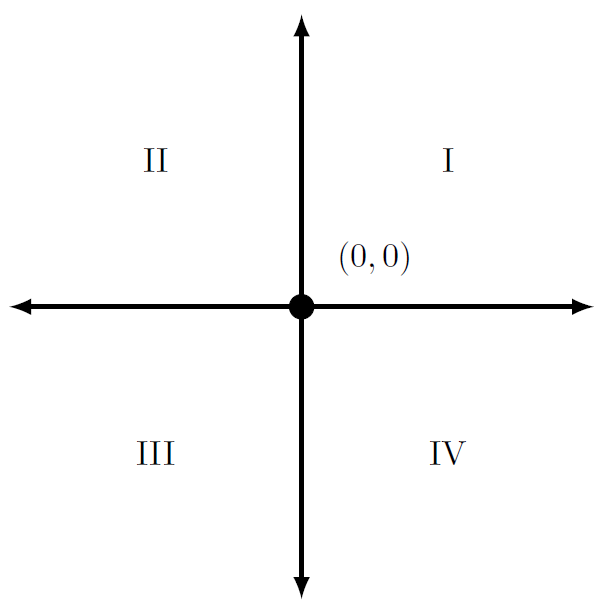
- An x-coordinate is positive in quadrant (s) __________ and negative in quadrant(s) _____________.
- A y-coordinate is positive in quadrant(s) __________ and negative in quadrant(s) _____________.
Plot the following points.
- Plot [latex](2,5),(-2,-5),(7,-3)[/latex], and [latex](-4,6)[/latex]
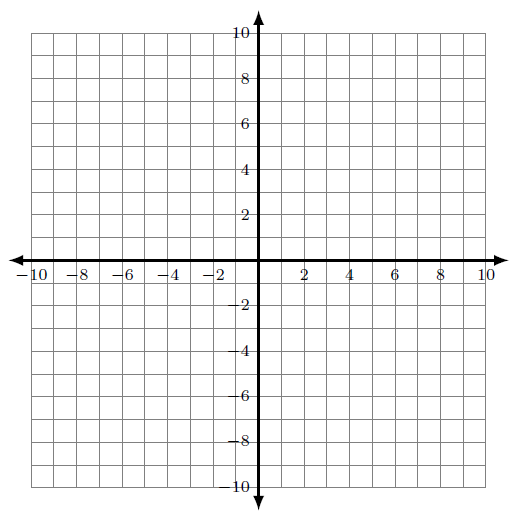
-
- Plot [latex](0,5),(0,-5)[/latex], [latex](0,-1)[/latex], and [latex](0, 9)[/latex].
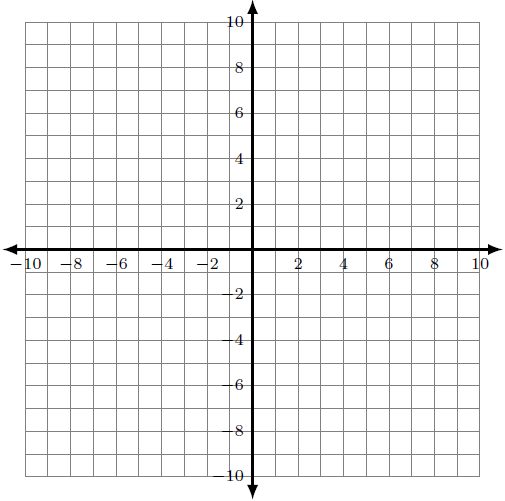
- These points are called y-intercepts. Discuss what they have in common.
- Plot [latex](0,5),(0,-5)[/latex], [latex](0,-1)[/latex], and [latex](0, 9)[/latex].
-
- Plot [latex](2,0),(-2,0),(-7,0),[/latex] and [latex](6, 0)[/latex].
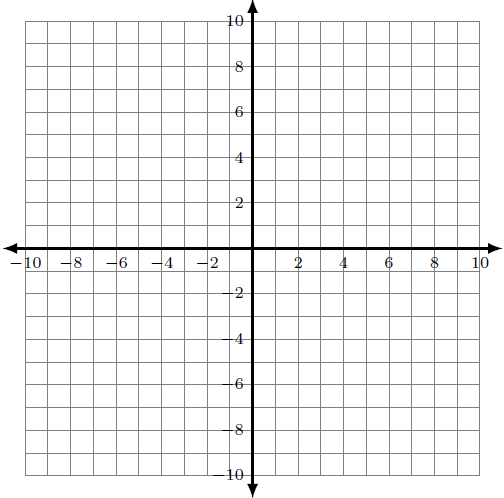
- These points are called x-intercepts. Discuss what they have in common.
- Plot [latex](2,0),(-2,0),(-7,0),[/latex] and [latex](6, 0)[/latex].
1.4.2 Preview
Linear Equation in Two Variables
A linear equation in two variables is an equation that can be written as
where A, B, and C are real numbers.
Try It!
Decide which of the following equations represent a linear equation in two variables.
[latex]3x-5y=10\quad\quad\quad\quad2^x=5[/latex]
[latex]-4x=1\quad\quad\quad\quad\quad\quad2-2x^2+y=1[/latex]
Example
For the linear equation [latex]x+2y=8[/latex], the point [latex](6, 1)[/latex] is a solution because
[latex]x+2y=8[/latex]
[latex](6)+2(1)=8[/latex]
The x-coordinate is [latex]6[/latex], and the y-coordinate is [latex]1[/latex].
Try It!
Show that [latex](-2,5)[/latex] is also a solution for [latex]x+2y=8[/latex]
Try It!
Can you find another solution for [latex]x+2y=8?[/latex]
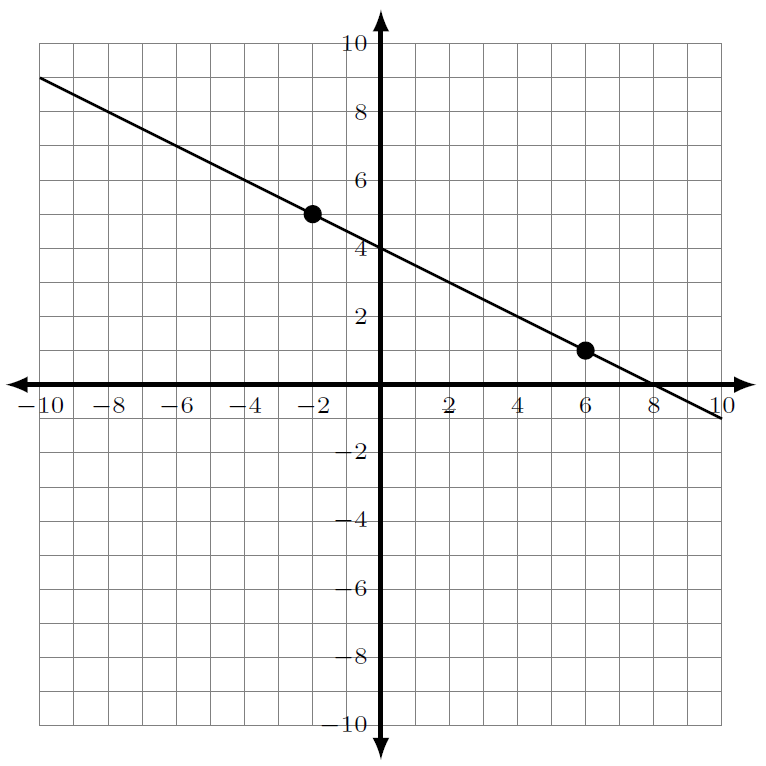
Intercepts
The x-intercept of a line is the point at which its graph crosses the x-axis.
The y-intercept of a line is the point at which its graph crosses the y-axis.
Try It!
Find the x- and y-intercept for each of the following lines.
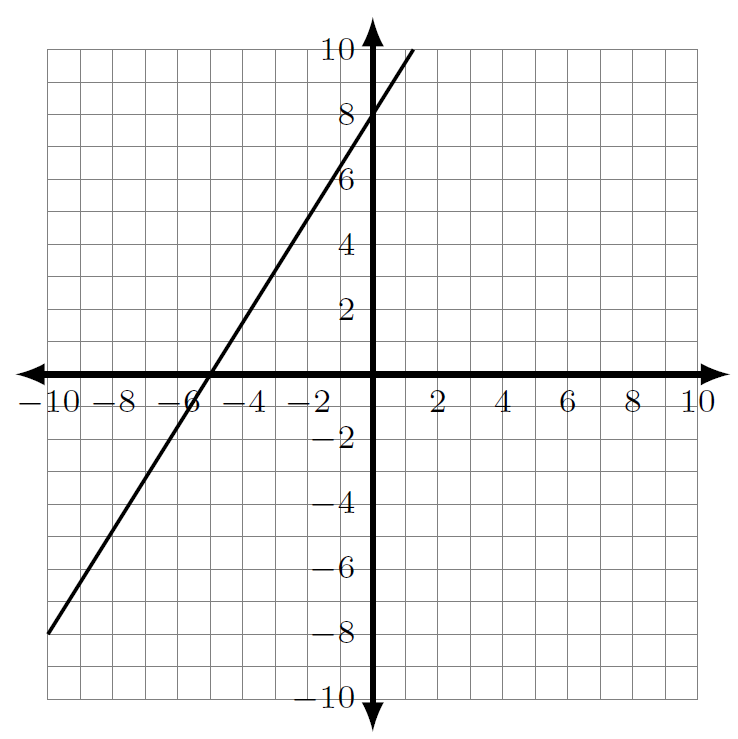
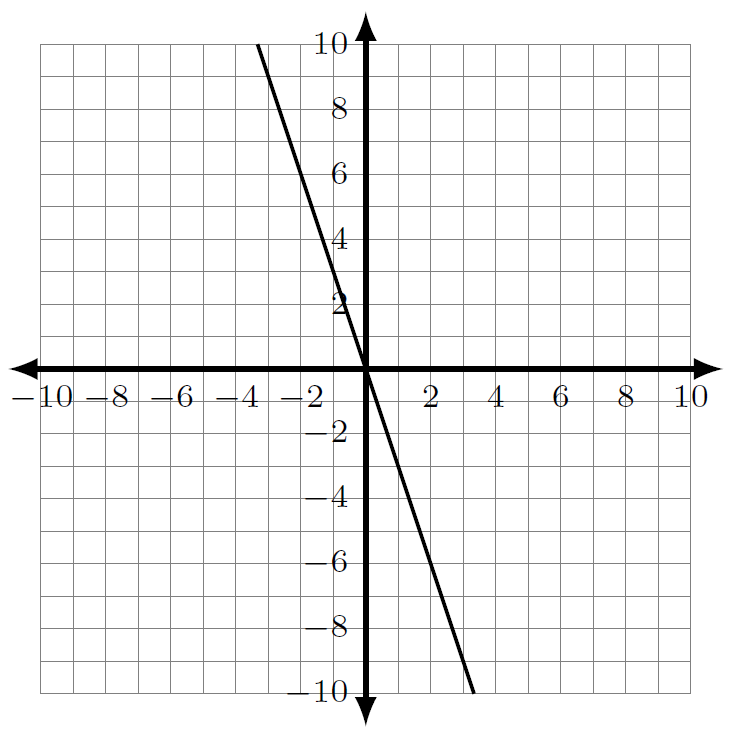
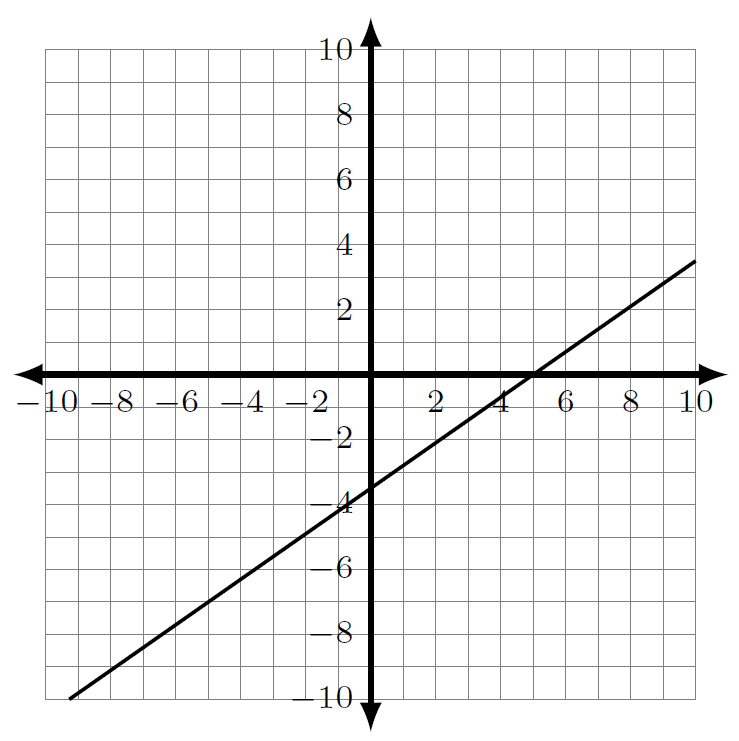
1.4.3 Classwork
Find the x- and y-intercept for each of the following lines.
- [latex]y=-2x+9[/latex]
- [latex]y=6+x[/latex]
- [latex]12y-2x=6[/latex]
- [latex]8x+5y=17[/latex]
- Sketch the graph of a line that
- does not have an x-intercept.
- does not have a y-intercept.
- [latex]\frac{5y}2=10[/latex]
- [latex]8x=-16[/latex]
- Write an equation of a line with y-intercept (0, 5).
Use the Intercepts Method to graph the following lines.
- [latex]5x+2y=10[/latex]
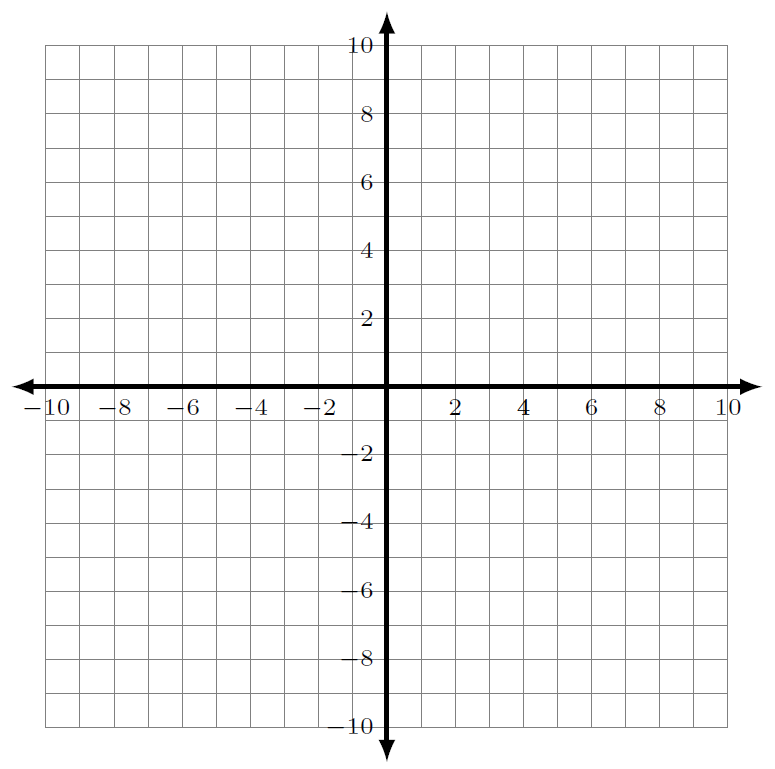
- [latex]\frac14y-\frac18x=\frac12[/latex]

- [latex]2y+\frac14x=-2[/latex]

- [latex]12y-2x=6[/latex]

- [latex]\frac{5y}2=10[/latex]

- [latex]8x=-16[/latex]

1.4.4 Homework
Find three different solutions for the following equations.
- [latex]3x-4y=12[/latex]
- [latex]-8x-y=16[/latex]
Find the x- and y-intercept for each of the following lines.
- [latex]y=8-3x[/latex]
- [latex]\frac2{15}x-\frac25y=\frac45[/latex]
- [latex]-4x+3y=2[/latex]
- [latex]-5y=15[/latex]
Use the Intercepts Method to graph the following lines.
- [latex]2x-6y=12[/latex]

- [latex]4x-12y=12[/latex]

- [latex]\frac12y=-\frac16x+\frac32[/latex]

- [latex]2x=8[/latex]

Answer the following.
- Write an equation of a line with x-intercept [latex](-2,0)[/latex].
- Explain in your own words why you plug in 0 for x to find the y-intercept.
- The graph of a line may be represented by more than one equation. For example, the equations [latex]3x-\frac14y=\frac32[/latex] and [latex]y=12x-6[/latex] both define the graph of the same line.
- Find the y-intercept for the line with equation [latex]3x-\frac14y=\frac32[/latex]. Show all steps.
- Find the y-intercept for the line with equation [latex]y=12x-6[/latex] Show all steps.
- For which equation was it easier to find the y-intercept, and why?
- Is it possible for a line to have two y-intercepts? Why or why not?
- Is it possible to draw a line with two x-intercepts? Why or why not?

